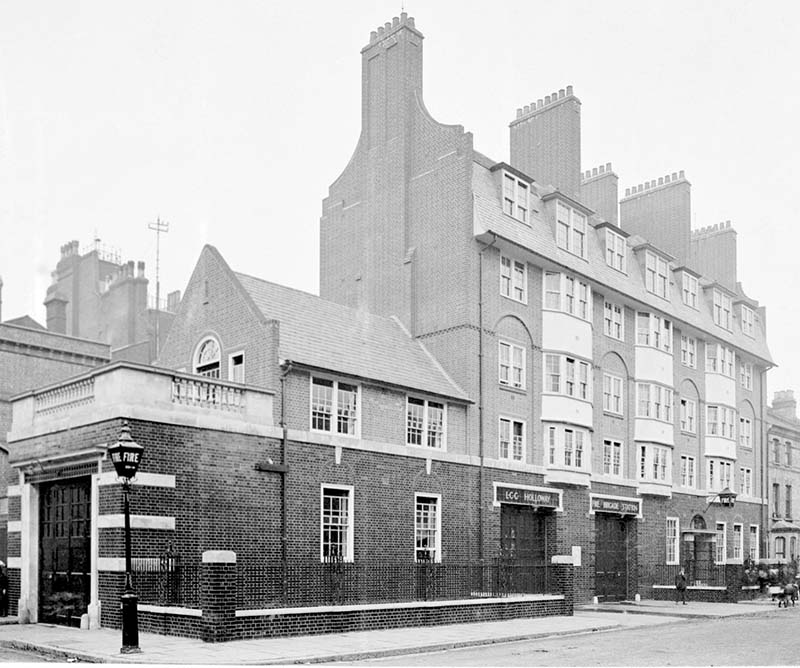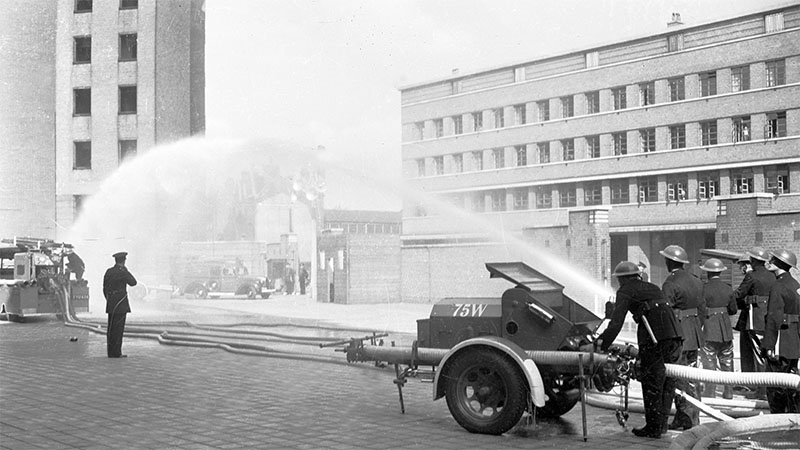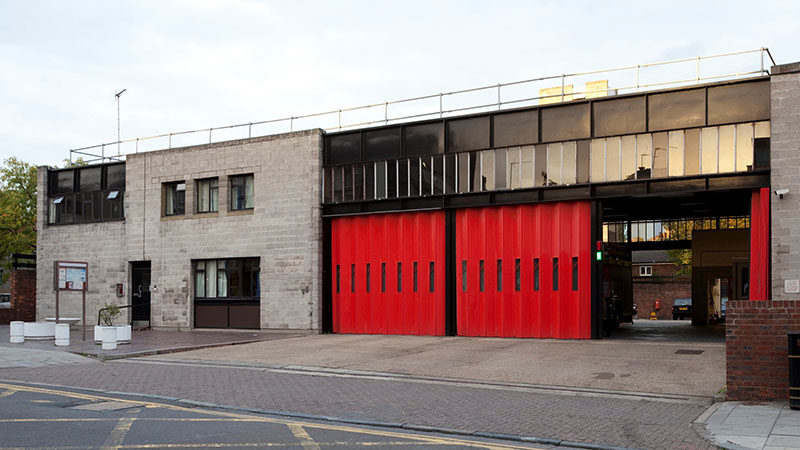The Metropolitan Fire Brigade (MFB) first built a fire station in Holloway in 1871. In 1889, the area managed by the Metropolitan Board of Works became the County of London, and the London County Council (LCC) was formed as the principle governing body.
The Brigade continued to operate as normal, with the only change that its stations, including Holloway, were 'relocated' into the new County. The MFB became London Fire Brigade (LFB) in 1904 under the management of the LCC.
As Islington, and London, expanded the station building became too small and a replacement was planned. The new Holloway Fire Station opened in Mayton Street on 22 October 1908.

The Auxiliary Fire Service formed in 1938, as part of the Civil Defence Service, to expand the resources of the regular fire services in wartime. Holloway Fire Station had six sub-stations, including Shelborne Road School.

In 1941, all fire brigades in the United Kingdom, including LFB, were brought together to form the National Fire Service (NFS).
In 1948, the NFS was disbanded, and Holloway again became part of LFB. When the Greater London Council formed in 1965, LFB expanded to include many greater London fire stations. Holloway became station C30 in the enlarged LFB but after a later re-organisation, it became station F31.
A new Holloway Fire Station was opened in Hornsey Road in 1975. The old fire station building in Mayton Street is still standing.

Holloway Fire Station houses a pump ladder and responds to a variety of incidents including fires, road traffic collisions and flooding, alongside community-based fire safety work.
It is also home to a Command Unit. These are designed to provide mobile access to a large working area, computers and communications equipment. They can be called to attend incidents across London, where three or more fire engines are required. These units are also used when extra command support is required, for example if there are hazardous materials involved.